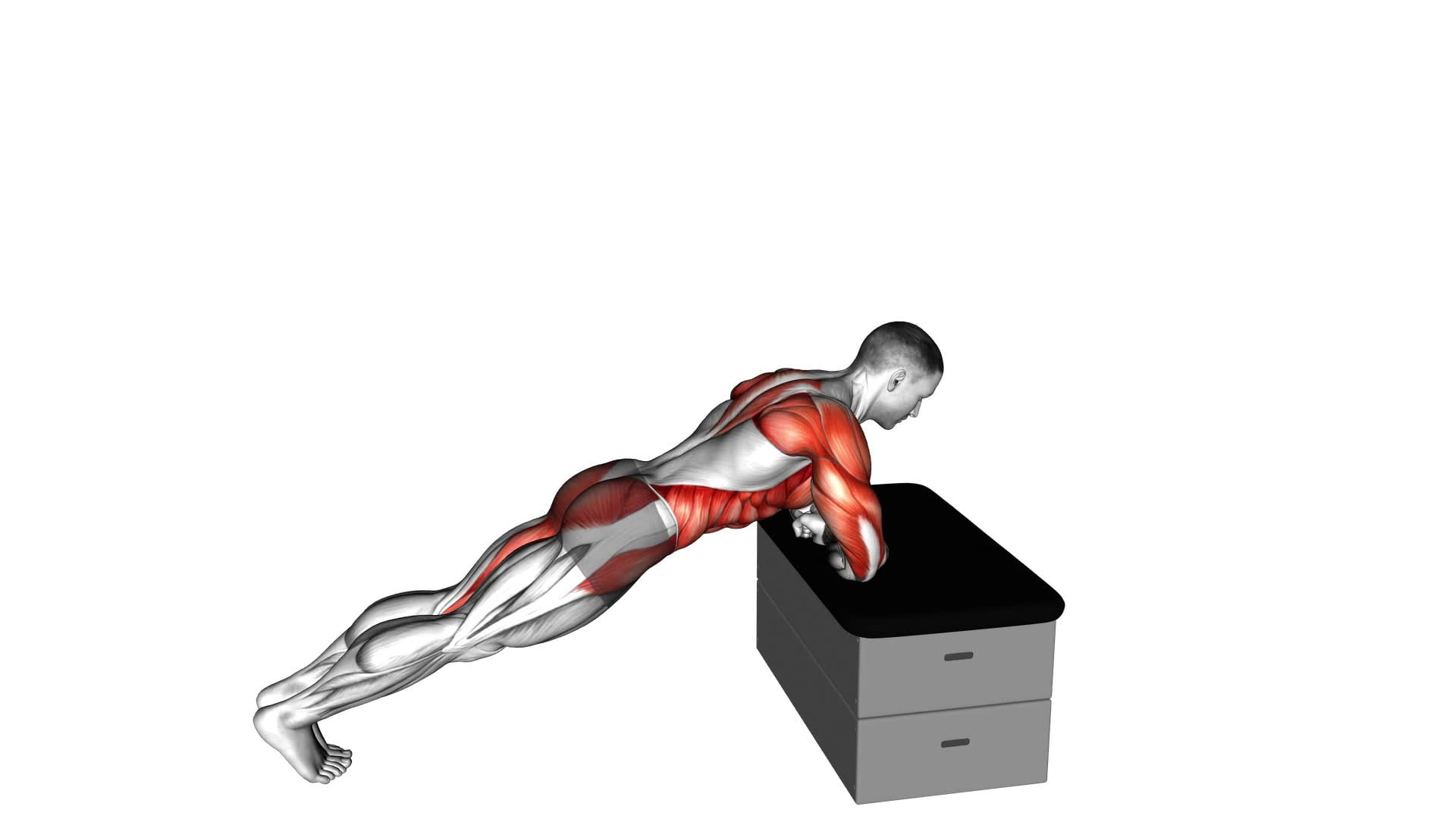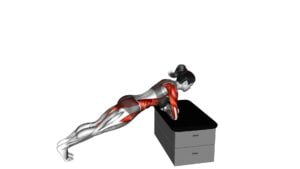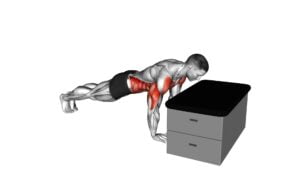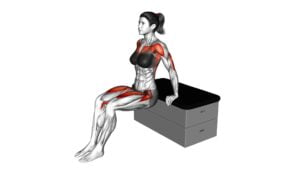Side Plank Rotation a Padded Stool Supported – Video Exercise Guide & Tips

Are you looking to strengthen your core and improve your balance? Look no further than side plank rotation with padded stool support!
Watch This Exercise Video
This exercise targets your obliques and stabilizer muscles, while the padded stool provides added support and comfort.
In this video exercise guide, we'll walk you through the proper setup, alignment, and step-by-step instructions for performing side plank rotation.
Plus, we'll share common mistakes to avoid and tips for progressing and increasing intensity.
Get ready to take your core workout to the next level!
Key Takeaways
- Side Plank Rotation with padded stool support helps improve balance and stability.
- It targets multiple muscle groups including obliques, abdominals, shoulders, and hips.
- It can be modified for individuals with wrist or shoulder issues.
- Increasing intensity can be done by adding resistance, increasing duration, or trying advanced variations on unstable surfaces.
Benefits of Side Plank Rotation With Padded Stool Support
One benefit of using a padded stool for support during side plank rotations is that it helps you maintain stability and improve your balance. When performing side plank rotations, the added support from the padded stool allows you to focus on engaging your core muscles and rotating through your torso without worrying about losing your balance. This is especially beneficial for beginners or individuals with limited upper body strength.
Additionally, the use of a padded stool provides modifications for those who may have difficulty performing side plank rotations on the floor due to wrist or shoulder issues. By elevating your body off the ground, you can reduce the pressure on your joints and still reap the benefits of this exercise.
Incorporating side plank rotations into a full body workout routine can also enhance your overall fitness. This exercise targets multiple muscle groups, including the obliques, abdominals, shoulders, and hips. By adding this movement to your routine, you can improve your core strength, increase your range of motion, and enhance your overall stability.
Proper setup and alignment for side plank rotations will be discussed in the next section, ensuring that you can perform this exercise safely and effectively.
Proper Setup and Alignment for Side Plank Rotation
To properly set up and align for side plank rotation, you'll need to position yourself on a padded stool with your forearm directly underneath your shoulder. This is the starting position for the exercise, and it's important to ensure proper form to maximize the benefits and reduce the risk of injury.
First, make sure your body is in a straight line from head to toe. Engage your core muscles by pulling your navel towards your spine, and keep your hips lifted off the ground. This will help maintain stability throughout the movement.
Next, focus on your shoulder placement. Your forearm should be directly underneath your shoulder, creating a 90-degree angle with your elbow. This will provide a stable base of support for your upper body.
For beginners or those with limited strength or flexibility, modifications can be made to make the exercise more accessible. One modification is to perform the side plank with your knees bent, rather than keeping your legs straight. This reduces the demand on your core muscles and allows you to gradually build strength and stability.
Step-by-Step Guide to Performing Side Plank Rotation
To perform the side plank rotation, position yourself on a padded stool with your forearm directly underneath your shoulder, maintaining a straight line from head to toe. This exercise targets your core muscles, particularly the obliques, as well as the shoulders and hips.
To begin, start in a side plank position with your feet stacked on top of each other. Lift your hips off the ground, engaging your core and glutes. Place your top hand on your hip or extend it straight up towards the ceiling for added challenge.
Next, rotate your torso downwards towards the ground, bringing your top elbow towards your bottom hand. Keep your core engaged and maintain a straight line from head to toe throughout the movement.
Return to the starting position by rotating your torso back up, opening your chest towards the ceiling. Repeat the movement for the desired number of repetitions, then switch to the other side.
Variations of the side plank rotation include performing the exercise on a yoga mat or on the floor instead of a padded stool. You can also add a dumbbell or kettlebell for added resistance.
Now that you know how to perform the side plank rotation, let's discuss some common mistakes to avoid during this exercise.
Common Mistakes to Avoid During Side Plank Rotation
To perform the side plank rotation correctly and avoid common mistakes, focus on maintaining proper form and engaging your core throughout the movement.
One common mistake to avoid is allowing your hips to drop or sag. This can put excessive strain on your lower back and diminish the effectiveness of the exercise. Instead, keep your body in a straight line from your head to your heels.
Another mistake is rotating your upper body too far, causing your shoulders to collapse and your hips to twist. To prevent this, aim for controlled and controlled movements, rotating only as far as you can while maintaining stability.
Beginners can modify the exercise by performing it on their knees instead of their feet. This reduces the load on the core muscles and makes it easier to maintain proper form. Additionally, using a padded stool for support can help beginners build strength and stability in the side plank rotation.
Tips for Progressing and Increasing Intensity in Side Plank Rotation
To progress and increase intensity in the side plank rotation, you can challenge yourself by adding resistance or increasing the duration of the exercise. These progression techniques will help you continue to build strength and stability in your core muscles.
One way to add resistance is by using a resistance band. Simply loop the band around your waist or hips and perform the side plank rotation as usual. The resistance provided by the band will make the exercise more challenging and help you further engage your muscles.
Another way to increase intensity is to hold the side plank rotation for a longer period of time. Start by holding the position for 30 seconds, and gradually work your way up to 1 minute or longer. This won't only increase the demand on your muscles, but also improve your endurance.
If you're looking for advanced variations, you can try performing the side plank rotation on an unstable surface, such as a balance board or a Bosu ball. This will require even more core stability and control.
Remember to always listen to your body and progress at a pace that feels comfortable for you.
Frequently Asked Questions
How Long Should I Hold the Side Plank Rotation With Padded Stool Support?
To get the most out of your side plank rotation with padded stool support, focus on maintaining proper form and engaging your core muscles. While there's no specific time limit, aim to hold the position for at least 30 seconds on each side.
This exercise targets your obliques, shoulders, and hip muscles, helping to improve stability, balance, and overall core strength. Adding side plank rotation variations can further challenge your muscles and enhance the benefits of this exercise.
Can I Do the Side Plank Rotation With Padded Stool Support if I Have Lower Back Pain?
If you have lower back pain, it's important to find alternative exercises for the side plank rotation. Doing this exercise with padded stool support may not be the best option for you.
However, using a padded stool for side plank rotation can provide benefits such as added stability and support.
It's always a good idea to consult with a healthcare professional or a certified trainer who can recommend exercises that are safe and effective for your specific condition.
Is There a Specific Time of Day That Is Best for Performing the Side Plank Rotation With Padded Stool Support?
The best time to perform the side plank rotation with padded stool support depends on your personal preference and schedule. However, it's generally recommended to do this exercise when your body is warmed up and your muscles are ready for a challenge.
Performing it in the morning can provide a great start to your day, while doing it in the evening can help you unwind and release tension.
The benefits of this exercise include strengthening your core, improving balance, and increasing flexibility.
Can I Use a Different Type of Support Instead of a Padded Stool for the Side Plank Rotation?
Yes, you can use a different type of support instead of a padded stool for the side plank rotation.
However, using a padded stool has its benefits. It provides more stability and comfort during the exercise, allowing you to focus on proper form and technique.
Additionally, the padded surface reduces the risk of discomfort or injury.
How Often Should I Incorporate the Side Plank Rotation With Padded Stool Support Into My Workout Routine?
To incorporate side plank rotation into your workout routine, it's important to know the benefits of using a padded stool for support.
The side plank rotation targets your obliques and helps improve core stability.
Using a padded stool provides added comfort and stability, allowing you to focus on proper form and execution.
As for how often to include it, aim for 2-3 times a week, alternating with other core exercises for a well-rounded workout routine.
Conclusion
In conclusion, side plank rotation with padded stool support is a beneficial exercise for improving core strength and stability.
By following the proper setup and alignment, and avoiding common mistakes, you can effectively perform this exercise.
Additionally, by gradually progressing and increasing intensity, you can continue challenging your muscles and seeing improvements over time.
Incorporate this exercise into your fitness routine for a stronger and more stable core.

Author
Years ago, the spark of my life’s passion ignited in my mind the moment I stepped into the local gym for the first time. The inaugural bead of perspiration, the initial endeavor, the very first surge of endorphins, and a sense of pride that washed over me post-workout marked the beginning of my deep-seated interest in strength sports, fitness, and sports nutrition. This very curiosity blossomed rapidly into a profound fascination, propelling me to earn a Master’s degree in Physical Education from the Academy of Physical Education in Krakow, followed by a Sports Manager diploma from the Jagiellonian University. My journey of growth led me to gain more specialized qualifications, such as being a certified personal trainer with a focus on sports dietetics, a lifeguard, and an instructor for wellness and corrective gymnastics. Theoretical knowledge paired seamlessly with practical experience, reinforcing my belief that the transformation of individuals under my guidance was also a reflection of my personal growth. This belief holds true even today. Each day, I strive to push the boundaries and explore new realms. These realms gently elevate me to greater heights. The unique combination of passion for my field and the continuous quest for growth fuels my drive to break new ground.







